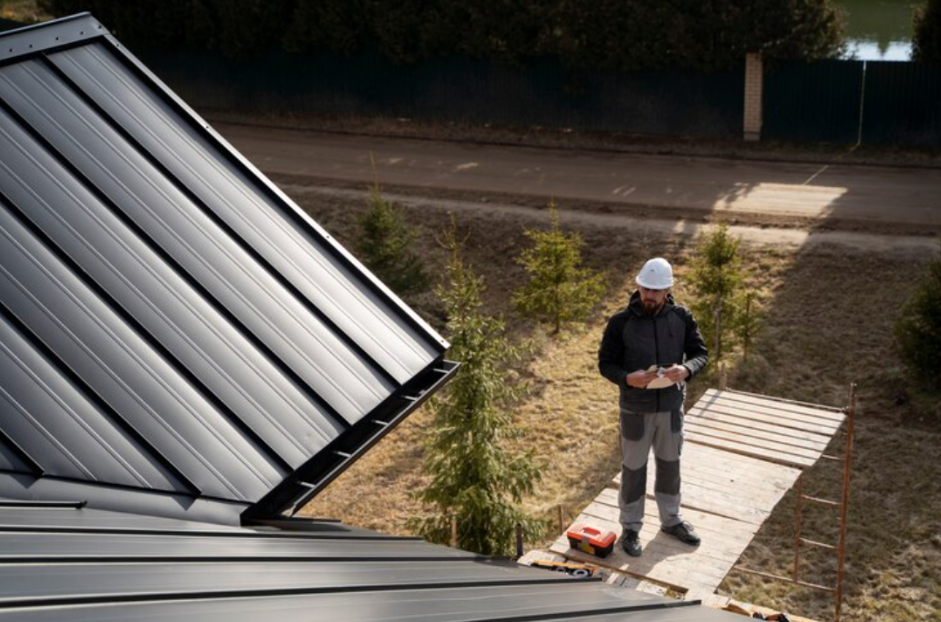
A Holistic Guide to Easy and Effective Guttering Installation
Roof gutter installation, whether you are doing it for the first time or as a replacement project, is crucial for channelling away rainwater from the structure and foundation of a residential or commercial building. In other words, gutters prevent mildew, leaks, and structural damage. And if you are a DIY enthusiast, you might want to handle the guttering installation on your own. So, this guide delves into everything you need to know for that – including guttering types, components, tools, safety tips, and the actual steps involved.
Continue reading to know all about it.
Types of Guttering
These days, uPVC or plastic gutters are the most popular as they are practical, easy to set up, sufficiently durable, and come in different colours. The gutter installation cost is also affordable in this case. In metal gutters, those made of stainless steel and aluminium are used widely as they are corrosion-resistant. Zinc and copper gutters are long-lasting but expensive. Cast iron gutters, though good for more than a century, are heavy, expensive, and mainly used for heritage buildings.
As far as profile is concerned, 112mm half-round and 114mm square are the types of guttering mostly used for residential properties. In regions of heavy rainfall, 120mm deep-flow gutters might be necessary. In industrial guttering installations, gutters measuring 160mm, 170mm, or 200mm are usually required.
Guttering Components
Before starting a gutter installation UK project, know about the key components:
- Round Guttering Sections: Runs that channel the water flow
- Running/Stop-End Outlet: Section that allows water to drop into a downpipe and out of the run
- Brackets: Also called support or fascia brackets, these keep the runs secured to the fascia capping boards
- Union Piece: Sections that facilitate the connection of different sections
- External Stop-Ends: Finishing sections at a gutter’s end
- Bends: Suitable for non-standard roofs (or where corners are needed)
Guttering Tools
You will need the following for a roof gutter installation project:
- Hacksaw
- Cordless drill or screwdriver
- Spirit level
- Pencil
- Ladder
- String
- Silicone lubricant
Ladder Safety
All gutter installation UK jobs need ladders. And a fall can hurt you more than you think. So, ensure the ladder you are using is robust and without any chips, dents, or splits. Also, position the ladder at a 4:1 angle against the wall, which means, for every 4 feet up you go, the base should be a foot away from the wall’s base. Wear safety goggles and protective gloves too.
Installing the New Roof
We are now at the most important leg of the shed roof replacement process. And these are the steps to follow:
- Step 1: From the fascia, hang a plumb bob so that it is right over the drain into which the gutter’s downpipe will empty.
- Step 2: Hold the running outlet or stop end section in place, and with a pencil, demarcate the overall position as well as the positions of fixing holes onto the fascia.
- Step 3: Once you drill small-sized pilot holes, attach the running outlet or gutter stop end to the fascia board with the help of appropriate fixings.
- Step 4: At this point, you need to do some calculations to make sure water runs out as it is meant to. Start from the position of the running outlet or stop end and measure till 100mm from the fascia’s end. Fit one of the support brackets at this stage, but its closeness to the roof will depend on your distance from the gutter outlet. Use the spirit level every meter to raise the gutter bracket’s height by 3mm. For example, if the gutter bracket is 4m or 13ft from the outlet, you have to fit it 38mm from the roof. This will create a drop of 12mm along the full run.
- Step 5: Once the fascia brackets are in position, tie a piece of brick-line or string between them and the outlet. The line should be tight. Then use the spirit level to assess the fall on the string. If your calculations in the previous step were accurate, it should drop by around 3mm for every metre.
- Step 6: Take another bracket and work down the line from the final gutter bracket that is on the fascia in the direction of the outlet. Mark where every bracket should be using the string. The brackets shouldn’t be more than 1000mm apart and not more than 150mm from any offset angle or bend. When you are sure about the measurements, fit each bracket with suitable fixings.
- Step 7: Use a silicone lubricant on the gutter seals of different components (gutter outlet, offset bends, union fixings, etc.) before fitting them all in place. This way, you don’t have to exert much pressure during the fitting and it will prevent water leaks too.
- Step 8: It’s time to snap gutters into place. Begin at the outlet end, place the first gutter length in position, and slot the run’s rear into place. It will sit right under the support bracket. Apply a firm but gentle push on the gutter’s front, so that it snaps into place.
- Step 9: After ensuring your first length is in place and level, fit a union bracket to ease the next section’s connection. Apply only a little pressure to fit to the first length you had put in position.
- Step 10: After fitting the union bracket in place, connect the next section of your gutter. Note the minimum depth of insertion on the union bracket. This section will snap into the pipe clip just like it does with every bracket.
- Step 11: Work along the fascia board and keep snapping the gutters into each fascia bracket pipe clip in the process.
- Step 12: You will finally reach the stage where you need to cut your guttering’s last section to fit it in place. After measuring the final gap, mark the guttering and cut it to size with a hacksaw. Ensure a perfect fit.
Fitting a Downpipe
After you are done with guttering installation, it is time to fit your downpipe. Follow these steps:
- Step 1: Hang a plumb bob from the outlet to the drain and draw multiple marks on the wall to indicate the position and direction of the downpipe.
- Step 2: Join the marks made with a straight edge to create a vertical line. This will help zero in on the downpipe’s centre.
- Step 3: If you need an offset, use an adjustable bend or two bends and a short pipe piece. Keep a 6mm gap at the downpipe’s top.
- Step 4: Start at the top of the wall and place a downpipe pipe clip over the pencil line in a central manner. Mark the position of fixing holes on the wall with a pencil. Place a downpipe clip right under the bend if offset bends are needed.
- Step 5: Repeat the above process as you go down the wall and make sure the space between pipe clips is no more than 1.8m.
- Step 6: With the help of a combi drill and the manufacturer-recommended drill bit size, drill fixing holes and insert the right wall plugs.
- Step 7: As you work towards the drain from the outlet, fit the first downpipe piece.
- Step 8: If it is necessary to add an extra length of downpipe, connect the two parts with a pipe clip and downpipe pipe socket. Ensure a gap of 10mm between the pipe’s end and pipe socket’s bottom to enable expansion. Then, right above the joint, affix a pipe clip.
- Step 9: Continue attaching pipe clips along the downpipe’s length.
- Step 12: You will finally reach the stage where you need to cut your guttering’s last section to fit it in place. After measuring the final gap, mark the guttering and cut it to size with a hacksaw. Ensure a perfect fit.
Conclusion
While you now know all about roof gutter installation, handling the task on your own can be a tad challenging and time-consuming. Availing professional help can make things easy and even give you peace of mind about the quality and accuracy of the project. Moreover, a reliable and experienced company like FastRoofing can not only take care of the installation process, but also offer periodic gutter cleaning services. It is, after all, essential for keeping dirt and debris at bay and allowing the proper flow of rainwater. So, contact the experts here today to discuss your specific needs and look forward to a top-class job.
